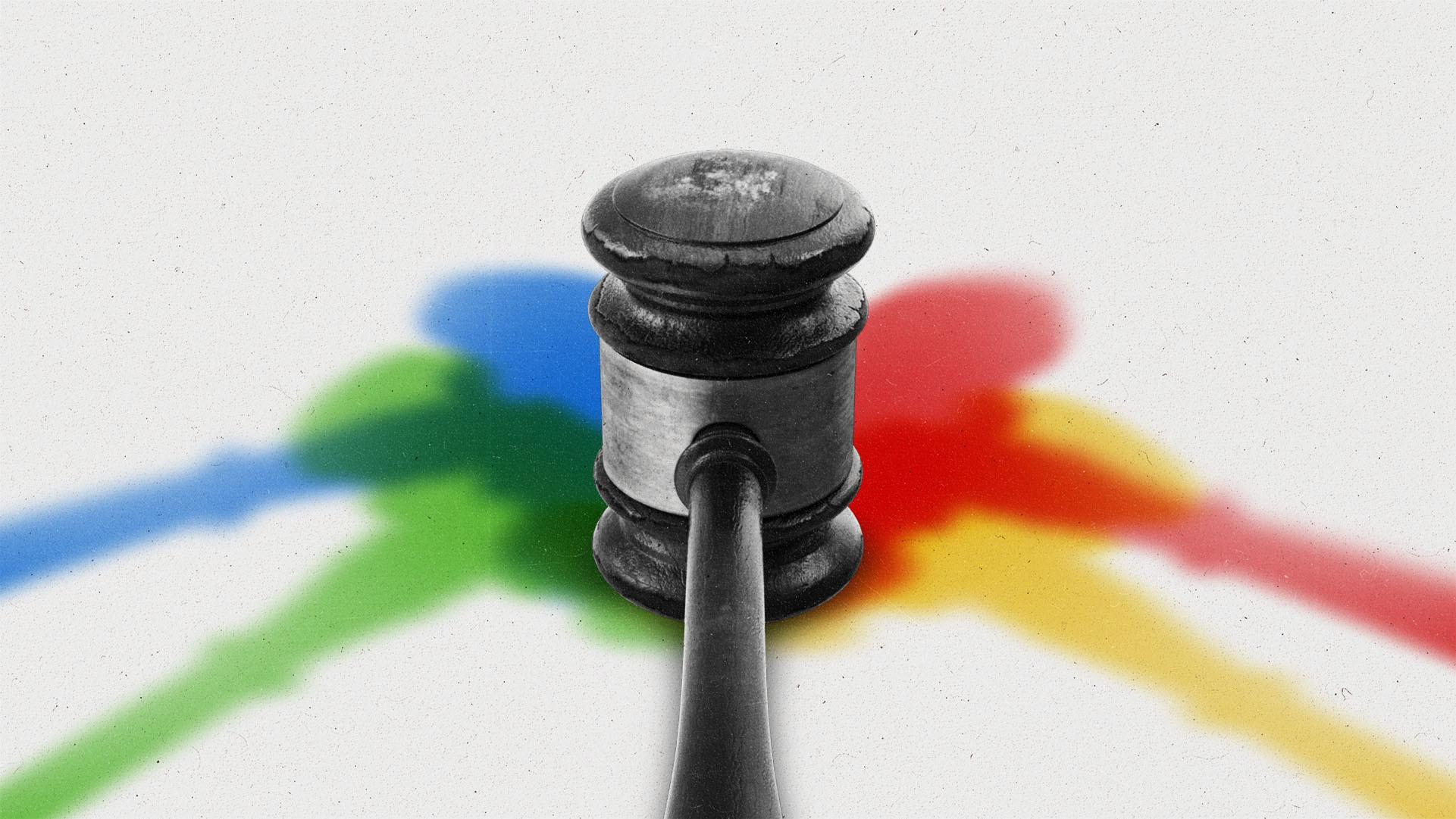‘They were holding us hostage’: Inside the groundbreaking Google ad tech trial

Over the last three weeks, ad tech aficionados watched closely during the revelatory antitrust trial over Google’s digital advertising business. On Sept. 27, the trial concluded, with closing arguments set for Nov. 25.
The trial shined a light on Google’s business practices, as the Department of Justice made the case that Google maintained a monopoly in three ad tech markets by stifling competition. It alleged that Google “monopolizes key digital advertising technologies” across the entire supply chain, according to the lawsuit filed last year.
“There's this expression where if the law is on your side, pound the law,” attorney Tom Blakely, who covered the trial for Big Tech on Trial, told The Current Report this week. “If the facts are on your side, pound the facts and when neither is on your side, you pound the table. And it seems like what's been going on here is the government has heavily pounded the facts.”
Google challenged the DOJ’s case, arguing that the ad tech industry is competitive and that it was meeting the demands of publishers.
Mark Israel, an economist who created an expert report for Google, testified on Sept. 26 that the DOJ “seems to miss where the competition is today,” pointing to social media companies like Facebook and TikTok, as well as online retailers like Amazon as rivals.
As the trial wraps up, The Current compiled the most important news to come out of the courtroom that marketers need to know.
Opening statements outlined each side’s case
Attorney Julia Tarver Wood made the DOJ’s opening statement, accusing Google of maintaining “a trifecta of monopolies,” which the department’s lawsuit claimed was in three markets depending on the geo: publisher ad servers, ad exchanges and advertiser ad networks.
The DOJ has claimed that Google controls between 87% and 91% of the ad server market; Wood said that publishers are “totally dependent” on the company.
Google attorney Karen Dunn argued that the three markets in question are not distinct markets, and that the DOJ is “gerrymandering its way to market reality.”
Google’s apparent impact on publishers
The DOJ has taken aim at how much money Google has kept from ad transactions. According to The Verge, Google has typically kept a 20% commission for these transactions; Brian O’Kelley, founder of AppNexus, said in a video testimony that the fee was “dramatically higher than competitors’.”
One former Google exec wrote in an email in 2018, which was presented in court, that the fee was “not long-term defensible.”
In a statement to The Verge, a Google spokesperson said, in part: “Publishers keep the vast majority of the revenue when they use Google’s advertising technology, and our fees are transparent and in line with industry rates.”
The DOJ aimed to make the case that customers still did business with Google despite the alleged higher fees because the company only allowed access to its substantial advertiser base through its own Google Ad Network, according to The Verge.
In 2019, Google started preventing publishers from setting higher floor prices for Google Ad Exchange, which could have encouraged competition during ad auctions; Stephanie Layser, a former NewsCorp programmatic exec who is currently with AWS, said during a testimony on the second day of the trial, “I felt like they were holding us hostage.”
Header bidding takes center stage
That leads us to header bidding, which allows publishers to offer ad inventory to multiple buyers, which could increase the price. But it also allowed publishers to receive bids before making those impressions available in Google’s ad exchange.
Chris LaSala, a former Google exec, wrote in a 2016 email released during the trial that the company needed to “fight off the existential threat posed by header bidding.”
Google introduced “exchange bidding” in the 2010s as an apparent response to header bidding; one internal Google email presented in court described exchange bidding as a “way to stem the bleeding” being caused by header bidding, according to Digiday.
In a 2016 email, former Google employee Jonathan Bellack, who testified during the trial on Sept. 20, said that header bidding was “measurably impacting” the company’s revenue and that the goal was to make exchange bidding “slightly better” than header bidding. Bellack confirmed that this was the company’s guidance during his testimony.
“It would be the equivalent of Coca-Cola selling their product to a local bodega for 70 cents and to Walmart for $1,” Jed Dederick, chief revenue officer at The Trade Desk, said during a testimony on the third day of the trial. “It didn’t, and wouldn’t, make sense to us unless there was something else happening.”
Google’s approach to competition
In its lawsuit, the DOJ alleged that Google maintained an ad tech monopoly, partly, by making acquisitions that would “neutralize or eliminate ad tech competitors,” including DoubleClick. Another such acquisition, the DOJ argued on Sept. 16 (as the trial entered its second week), was Admeld, which created yield management tools.
A 2010 email from current YouTube CEO Neal Mohan, presented in court, said that Google had “missed the yield manager threat.” The company bought AdMeld in 2011, integrated the tech into its ad exchange and shut it down two years later, according to Bloomberg.
Mohan, though, said in court that Google only bought AdMeld because the tech was a “gap in our portfolio” that the company need to close “as quickly as possible.”
This story was updated on Sept. 27 to reflect the conclusion of the trial. Closing arguments are scheduled for Nov. 25.
The Current is owned and operated by The Trade Desk Inc. An individual from The Trade Desk is among the 68 people included on the trial witness list.
Subscribe to The Current
Subscribe to The Current newsletter